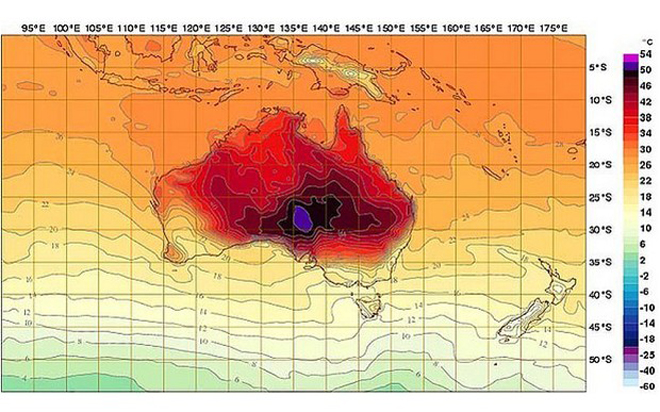
Here's the big news of the day: Autonomous cars are making a big splash at the Consumer Electronics Show right now. Audi is testing its self-driving cars on Nevada roads. Google's already done it in California. Toyota and Lexus are getting ready too.
Here's the other big news of the day: The planet's getting hotter. Australia has had to add a new color to its heat maps. If climate change has an illustrator, it's the Australian Bureau of Meteorology. If it has a color, it's pink and purple.
Do these two news items have anything to do with each other? You bet they do, if the driverless car becomes the mass transit of the future (hold the "mass"). This incarnation of personal rapid transit futurism looks to some like a cleaner, safer transportation system. To others, it looks like a senseless replacement of a public transportation system -- which, by right, should still have generations of improvement ahead of it -- with single-occupancy vehicles. That's one backward future.
These cars are not fully driverless yet, the carmakers emphasize -- Jim Pisz, a Toyota corporate manager, told Wired, “We believe the driver should always be in control of the vehicle."
Still, CNN ran this headline in the fall: "You won't need a driver's license by 2040." They quote Azim Eskandarian of the Institute of Electrical and Electronics Engineers (IEEE) saying that in a "full-autonomy" case, drivers (maybe "occupants" is a better word) won't need any special requirements: "People do not need a license to sit on a train or a bus."
Jarrett Walker wrote the other day on his Human Transit blog that he just doesn't buy all the driverless car talk. He said fans imagine these vehicles "in the complete imagined future mode." He says that the fantasy takes place in a more evolved future, but "there is no credible path from here to there."
But IEEE (via CNN) insists the new, autonomous automobile will need no special infrastructure -- not even traffic lights, since the vehicles will be so well coordinated. In fact, since cars can drive closer together at higher speeds in the brave new autonomous-car world, there will be less congestion and we won't even need as much highway capacity.
Google co-founder Sergey Brin is quoted by NBC News saying, "I think the self driving car can really dramatically improve the quality of life," and pointing to uses ranging from aiding the blind and ferrying revelers who drank too much to simply making better use of commuting time.
Some say driverless cars will even reduce the scourge of parking in our cities because driverless cars can be shared and once they're done running one errand they can be sent out on another one. So they'll always be on the road -- which would seem to create more congestion, as they drive alone to get to their passengers.
As Streetsblog reader jd_x commented on a similar story last week, this technology seems to be "the least bang-for-your buck way of improving transit." Karen Lynn Allen said, "We have to transition away from energy-gobbling private cars, not pretend we can replace them with driverless ones." And Dave "Paco" Abraham said it all:
The allure of a driverless car is that you can travel nearly door to door without having the burden of operating the vehicle or needing to pay attention to the road. However, that reality already exists. It's called a bus. When it's below ground it's called a train. An added bonus, you don't even need to find parking for it. Why is this news to people? Mass transit is here and its real. And if we seriously commit to it, we can make it way more useful than any driverless vehicle ever will be.
Amen, Paco.





